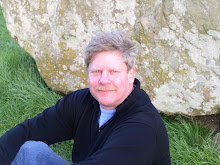Why I'm hot on passive solar energy (pardon the pun).
Passive solar energy offers a virtually free source of heating, cooking, drying and even electrical energy.
Many passive solar do-it-yourself projects can be done very inexpensively, in an earlier post I provided a link to a web-site that offered plans on different types of solar ovens, most of the designs used materials easily found in most homes.
What makes passive solar different from PV (photo-voltaic) Solar Panels?
Solar panels are used to convert light to an electrical current that is then used to power low-voltage devices directly or used to charge batteries in a solar energy system.
Passive solar refers to capturing or harnessing the sun's heat to produce a desired result, the are no mechanical or electrical components required.
Some examples of passive solar application is hot water collection, household heating, even food and vegetable dehydration.
Passive solar heat can actually turn small turbines for electrical power.
Although I believe in the use of solar panels as one effective method of self sustainability, I still find them very expense to use for the average household.
If I had one complaint about many of the "green" educational television programs is that they often focus on large, very costly projects. Not many people have the hundreds of thousands of dollars to renovate or build a new efficient 'green" home.
Passive solar offers immediate results with very little investment in dollars, just a bit in time and imagination.
Building a small greenhouse is one way to get immediate benefit using passive solar heating.
There are many examples of simple projects for solar hot water collectors and food dehydrators available online.
I have seen examples of using passive solar heat (stored in attic space) to dry clothes saving energy and money from the gas or electric clothes dryer. Using a clothes line to hang laundry outside is one idea to eliminate the use of the indoor dryer (saving energy and money) but what to do on a rainy or cloudy day?
The point is that using passive solar energy and harnessing the power of the sun, is but one step forward on the path to self sufficiency and sustainable living.
Brett
Subscribe to:
Post Comments (Atom)











No comments:
Post a Comment